SUNDAY JOINT, 3-31-2024: SURFING’S BRUSH WITH GREATNESS

Hey All,
Airbrushing is still a thing in surfing and always will be, until the Cybertrucks go rogue and bring down the grid at which point the compressors fall silent and we’re back to decorating our boards with charcoal and berry juice. But airbrushing is not a thing in 2024 the way it was in the 1970s and the sport is less colorful for this fact—and a bit less ridiculous, and I mean ridiculous with nothing but affection. Those flat-black surfboards that came into vogue a few years back look amazing. But black is strict to a fault. Black is the opposite of airbrushing.
Before airbrushing, we sometimes did fun things in the gloss coat, and by “we” I mean Corky Carroll and his insane black-on-green Batman board. Only just now, uploading this 1966 photo of Corky that I’ve seen 500 times, did I notice the board also has an anti-villain Bat-fin, look at that thing, tourniquets for everyone!
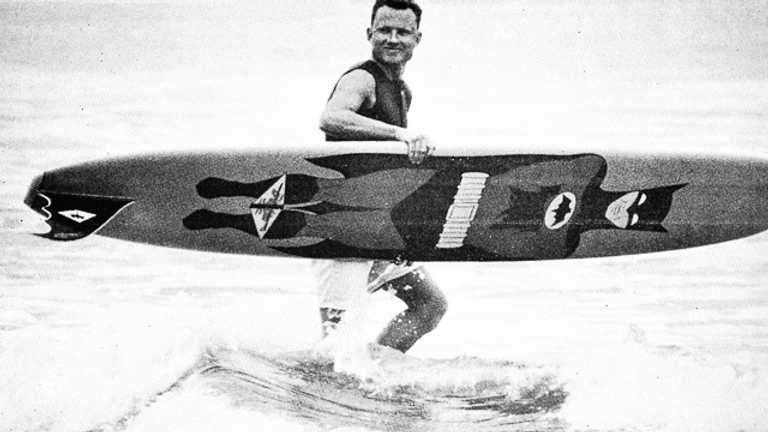

With airbrushing, you got all the color, none of the extra weight (Corky’s Batman board bent the scales at something like 35 pounds, thanks to all the added resin), and tons more design flexibility. Here’s where the ridiculous comes in. On the mind-blowing side of things you’ve got Terry Fitzgerald (above) and his 1974 Martyn Worthington-sprayed quiver that looks like it came straight from the Barris Kustom garage, if the Barris gang were sautéed on Orange Sunshine and watching the Pacific Vibrations “Tales of Brave Ulysses” sequence on loop.
On the funny-ridiculous side of things, as always, we begin with Mike Purpus.
There is a 10-year timeline that should be made, starting around 1972, and I will bring this up at the next Surfing Heritage and Culture Center boardroom fête, showing the best of Mike’s airbrushed boards, which got more outrageous in direct inverse proportion to Purpus’ slow fade from Mainland American surfing supremacy. On the early side, we have ripped-ab Purpus with a double-strand puka shell necklace and a board featuring Raquel Welch from One Million Years B.C. On the other end, we have the puffy-faced Bailey Wetsuit-wearing Purpus holding a board featuring an underage blonde who is not only full-frontally nude but holding a surf magazine with a cover shot featuring . . . yes, Mike Purpus.
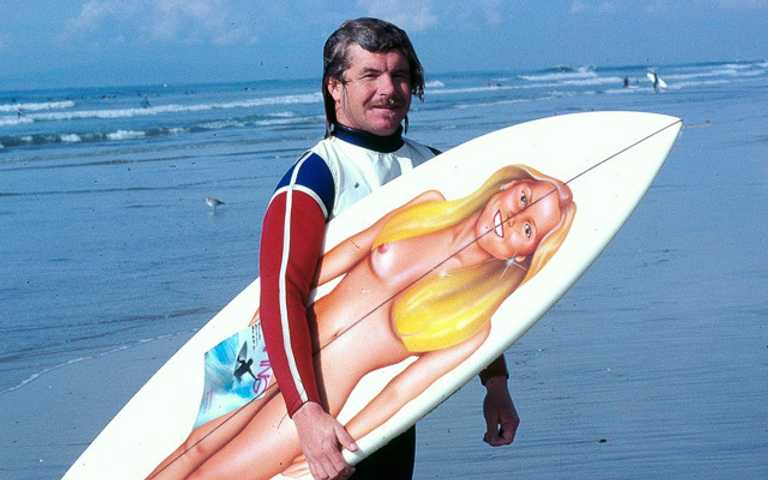
Until recently I thought Mike was the only surfer to take the essential but unstated look-at-me spirit of the airbrushed board to a place that is literally and point-blank LOOK AT ME—the airbrush as portrait. But there were others. I’ve just found the picture you see below of Peter Townend, who for my money was Mike’s equal in camera-snatching flamboyance but outgunned when it came to humor. I’m also including surfboard shaper and airbrusher Bill Stewart in the mix, even though the work you see here is on canvas not foam, because there is something vaguely Alfred E. Neuman in the way Stewart has rendered the eyes, which brings out the Mad fanboy in me, and I want to think this was on purpose but more likely a gust of wind threw Bill’s spray-hand off for a moment and everyone involved just went with it.
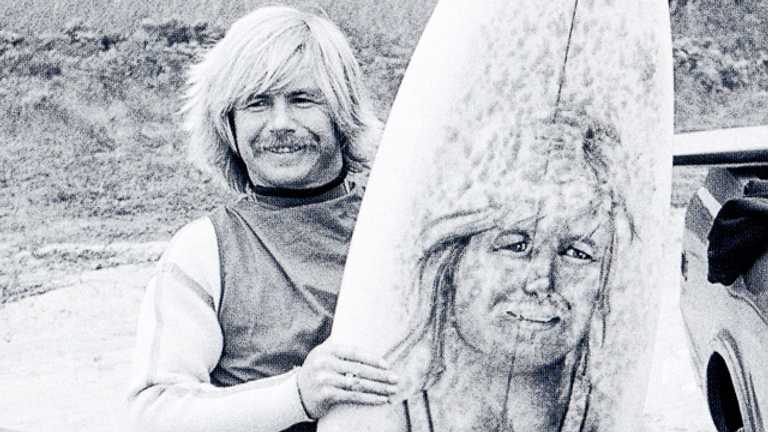


We could pivot here to Larry Bertlemann’s bell-bottom long john and Matt Wilkinson’s joyous run of site-specific novelty Rip Curl fullsuits—greenbacks for New York City, tie-dye for San Francisco—because in terms of flash, Larry and Matt are in the same zip code as Purpus and PT. But let’s save that for another Joint, we’re out of room.
Thanks for reading, everyone, and see you next week!
Matt
PS: Adam West was a Honolulu DJ in his pre-Batman years, and it is rumored that West (then known as Bill Anderson) surfed occasionally while in Hawaii. West moved to Hollywood in 1959 and started getting roles right away, including the lead in a 1964 episode of Outer Limits, which as I recall was a lesser version of Twilight Zone but both shows were fantastic. Here we see West at the LA Coconut Grove in 1968 with just-crowned world champion Fred Hemmings.
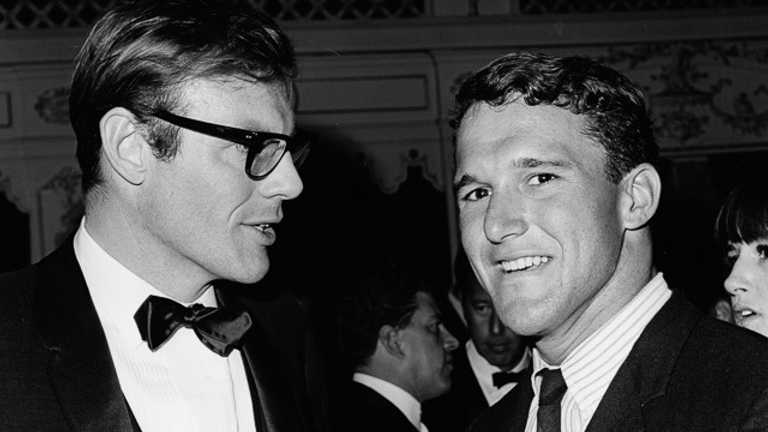
PPS: I probably have it in for airbrushing a little because the one time I really leaned into it was such a bust. Tom Petty’s debut LP came out during my junior year, just as I was transitioning from Kiss and Ted Nugent to the Clash and the Stiff Records gang and such. Petty, even though he was born in Florida, was so good he was practically British, and in his honor and in hopes that some of his Breakdown mojo might rub off, I had the bottom of my new stick airbrushed with the Tom Petty logo (see grid, above), except instead of a Flying V guitar piercing the big red heart I had a yellow stinger, and instead of “Tom Petty and the Heartbreakers” on the ribbon I had “Unity Surfboards.” The cost was outrageous, I thought, something like 25 bucks (I was getting free boards at the time, being a Unity teamrider and shop-worker), even worse I had to wait an extra few days (the late, great Jack Meyer did the spray and was already very much in demand), and the point is the board looked amazing but rode like shit and I sold it two or three weeks later. Or rather, the real point is I’m too cheap and impatient to be bothered with airbrushing.
PPPS: Blame the vans.
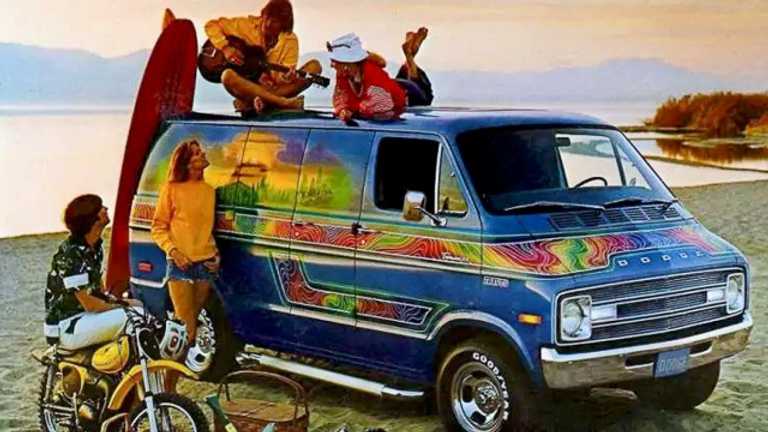
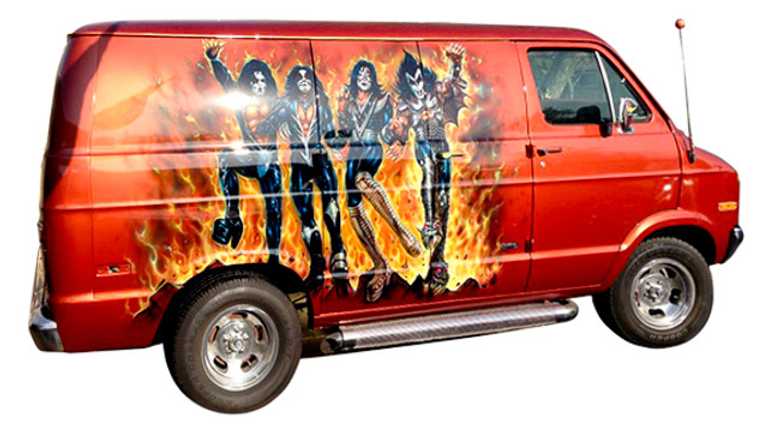
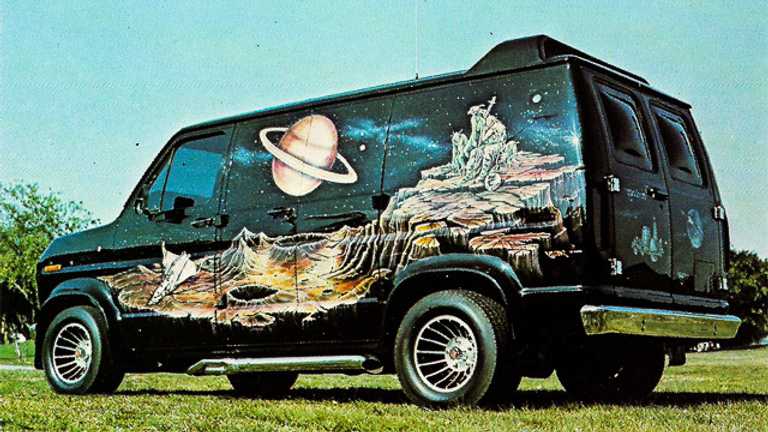
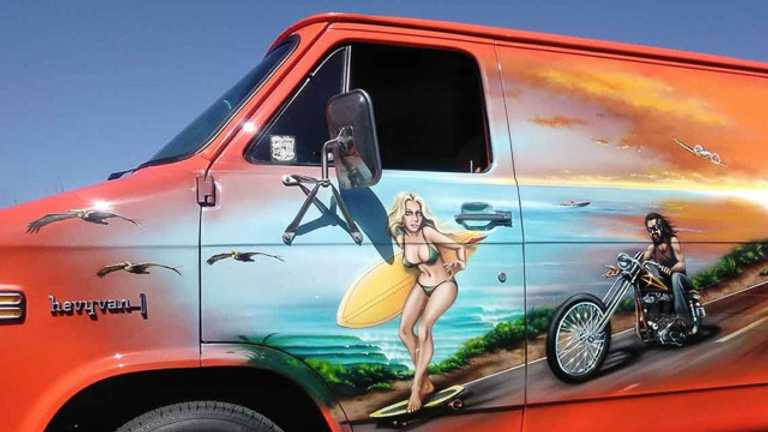
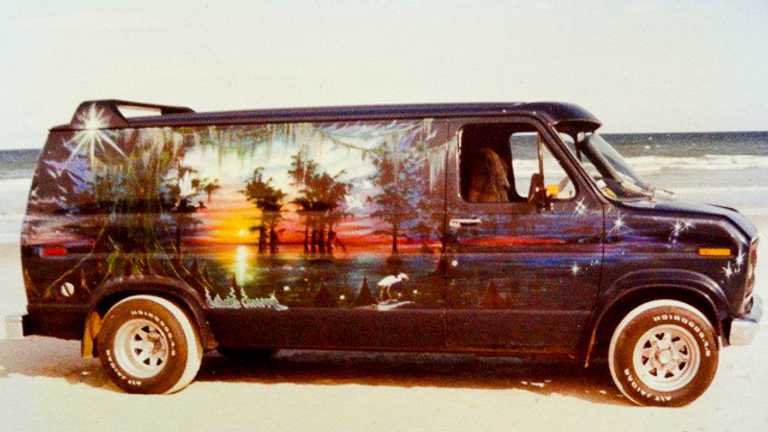
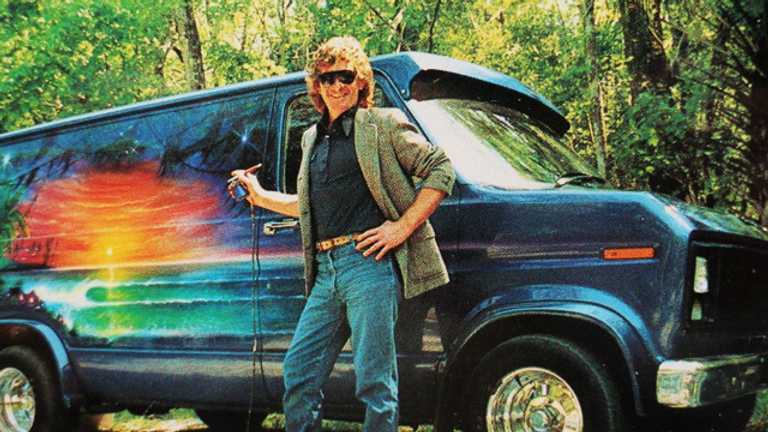
[Photo grid, clockwise from top left: Black’s Beach surfer by Jeff Divine; Terry Fitzgerald, Sunset, 1975, by Art Brewer; George Barris in the Fireball 500; the Joker in “Surf’s Up! Joker’s Under,” 1967 episode of Batman; Mike Purpus, center, Hermosa Pier, 1976, photo by Kevin Cody; Tom Petty and the Heartbreakers logo from debut album. Corky Carroll and his Batman board in 1966. Terry Fitzgerald and his North Shore quiver, by Jeff Divine. Mike Purpus by John Lyman. Purpus with portrait board, 1977, by Jeff Divine. Peter Townend, 1977, by John Witzig. Bill Stewart, 1981. Fred Hemmings and Adam West, 1968.]